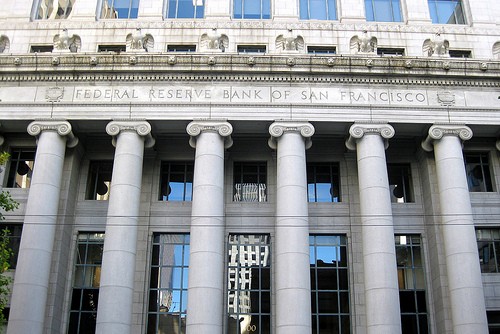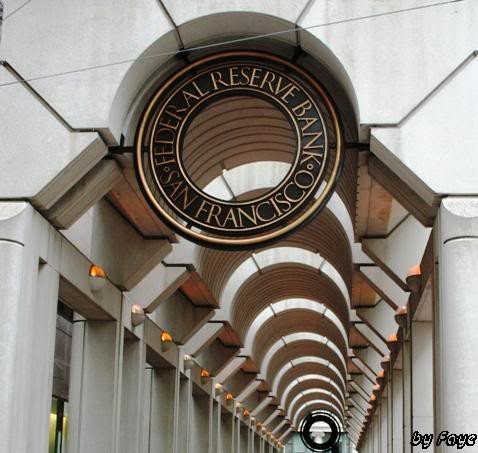Federal Reserve Bank San Francisco
Post on: 12 Май, 2015 No Comment

Does the Stock Market Prefer Republican Administrations?
James Booth and Lena Chua Booth
Theres an old adage that a Republican in the White House means higher stock market returns. This adage derives from the generally held view that policies promoted by Republicans are more favorable to stock markets and capital formation. The humorist Will Rogers reportedly suggested that, in order to find the place where the Republican Party was formed, one should find out where the first business was formed. This has translated into Wall Street folklore that, since Republicans represent the party favored by business, the stock market prefers Republicans to Democrats.
This Economic Letter examines the evidence related to stock market performance when Democratic and Republican candidates occupy the White House. Using data for the period 1871 to 1997, we find that the stock returns are almost identical under Democratic and Republican administrations. The Democrats have a slight edge in the pre-World War II period as a result of the effect of the 1929 crash and the subsequent recovery. However, since 1945, the returns have not been statistically different when Democrats or Republicans occupy the White House. These findings generally confirm earlier studies for different time periods and stock market indexes, although recent strong stock market performance gives Democrats a slight edge (though it is not statistically significant) in the postwar period.
While the party in the White House is not always the party in control of the Congress, the presidential administration is often judged to be more responsible for the health of the economy than the Congress. Consistent with this view, studies examining stock market performance under the political parties generally focus on when each party occupied the presidency. Most studies focus on the immediate market reaction to the election of the presidential candidates of each party.
For example, Riley and Luksetich (1980) look at the immediate stock market reaction in the day, week, or month around an election. These event studies covering the period of 1900 to the late 1960s and early 1970s generally show mild positive reactions to the election of Republicans relative to Democrats. This performance is confirmed by Siegel (1994), who finds that during the 1888 through 1992 period, the Dow Jones Industrial Average (DJIA) fell an average of 0.75 percent on the day following Democratic victories. For the same period, Republican victories are associated with rises in the stock market of 0.81 percent on average. Since World War II, the market has fallen slightly over 1 percent when a Democrat was elected, and has risen only slightly on Republican victories.
Siegel (1994) also calculates the returns for the Dow Jones Industrial Index over the terms of the different presidents. He finds that since 1888, the DJIA fared better under Democratic administrations in nominal terms, but not after controlling for inflation. Using data after 1948, Siegel finds that the market has experienced higher returns under Democratic than under Republican administrations, even after controlling for inflation. He does not test whether the results for the two sub-periods were statistically different.
Another look at the evidence
In this Letter. we focus on the performance of the market over presidential terms. We compare the performance of the market during the years of Democratic versus Republican administrations. Examining return data for the period 1871 through 1997, we cover a sample of nineteen Republic and fourteen Democratic administrations.
For the 1926-1997 period, we use annual return data collected from The Stock, Bonds, Bills, and Inflation Yearbook. 1998, by Ibbotson Associates. To extend the sample back to 1871, we rely on the stock index compiled by the Cowles Commission presented in Wilson and Jones (1987). Both series represent a broad index of total stock returns for a portfolio of large stocks. The index of large stocks is the total return on the S&P 90 for the 1926-1956 period and the S&P 500 composite from 1957-1997. During the 1871 to 1925 period the Cowles index tracked the largest stocks in the U.S. market, with the total at 48 in 1870 and growing to 258 in 1925.
In the two panels of Figure 1. we report the average annual total returns under each of the presidential administrations during the sample period. The data cover the last two years of the first Grant administration through the first year of the second term of the Clinton administration. This means that the average return for the entire period is not the same as the average of the mean annual returns for each administration.
From Figure 1. we can see that the average annual returns for the broad index of stocks are virtually always positive during both Democratic and Republican administrations, with the exception of two Democratic and three Republican administrations. The largest negative annual returns (-21.2 percent) occurred during the Hoover administration, which included the 1929 stock market crash. The largest positive returns occurred during the first Roosevelt administration (+33.5 percent), reflecting the recovery from the crash of 1929. For the Democratic Party, the second term of Roosevelt, 1937-1940, had an average annual return of -3.1 percent. Since 1945, the average annual returns are positive for all presidential terms, both Democratic and Republican.
In Figure 2. we include the averages for the periods 1871-1997, 1926-1997, and 1945-1997. We use this breakdown to provide comparison with earlier studies and to determine whether the results are sensitive to the impact of the Great Depression and whether the results are different for the 1945 to 1997 sub-period.
Positive average annual returns exist for both parties over each of the sub-periods. For the period 1871-1997, the average annual returns for Republican and Democratic administrations were 10.5 and 11.7 percent, respectively. During the 1926 to 1997 sub-period, the return was 10.7 percent for Republican administrations and 15.1 for Democratic administrations. The returns for both periods give a slight edge to Democratic administrations, though the returns are similar. Statistical tests indicate that the returns are not significantly different.
The data for the period after 1945 provide stronger evidence that the returns are on average the same under the administration of both parties. For Republicans, the average annual return is 13.1 percent and for Democratic administrations it is 15.3 percent. The strong recent performance of the market gives an edge to Democrats. However, because of the high degree of variations in returns and the small number of presidential terms, statistical tests fail to conclude that the mean returns are different. Overall, these findings suggest that stock returns are similar for the Democratic and Republican administrations, especially since World War II.
Our findings are similar to those reported by Siegel (1994) for the DJIA. He finds that average returns between 1948 and 1992 were 13.4 percent under Democrats and 11.4 percent under Republicans. Though no statistical tests for differences in mean returns are presented, he concludes that the market has fared better under Democrats than under Republicans in both real and nominal returns. Our statistical tests of returns on a broader index indicate that the returns are not statistically different under Republicans or Democrats. To the extent that our estimates differ from Siegels, it is probably due to the difference in the years covered by the samples (we use 1945-1997, while Spiegel uses 1948-1992) or to the fact that we use the S&P 500, a broader index than the DJIA which Siegel uses.

Over the years, stock analysts have suggested that the market prefers Republicans in the White House. This apparently arises from the view that Republican administrations are more favorable toward business than Democratic administrations. Most studies attempting to document this have focused on the stock returns around elections, and find weak evidence for this in the behavior of the stock market. In this study, we examine the returns on the market over the Democratic and Republican terms in office from 1871 to 1997. We find, contrary to earlier belief, that there is no support for returns being different under one political party versus the other. The old adage that the market prefers Republicans is not evidenced. On the contrary, the evidence indicates a slightly, but not statistically significant, higher returns during Democratic administrations.
James R. Booth
Arizona State University and Visiting Scholar, FRBSF
Lena Chua Booth
Thunderbird, American Graduate School of International Management
Riley, William, and William Luksetich. 1980. The Market Prefers Republicans: Myth or Reality. Journal of Financial and Quantitative Analysis. September, pp. 541-560.
Siegel, Jeremy. 1994. Stocks For The Long Run: A Guide to Selecting Markets for Long-Term Growth. Richard D. Irwin Inc. pp.188-193.
Wilson, Jack, and Charles P. Jones. 1987. A Comparison of Annual Common Stock Returns: 1871-1925 and 1926-85. Journal of Business. April, pp. 239-258.














